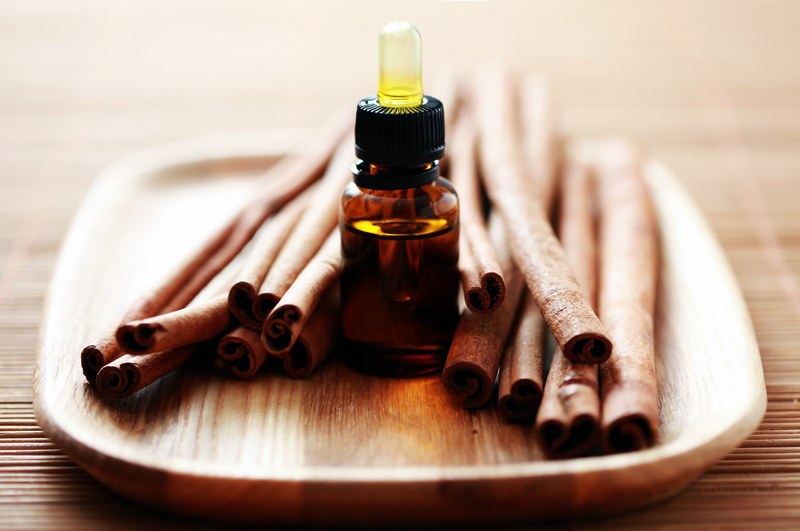A Jewel's Best Friend: Essential Cleaning Methods
Posted on 06/09/2025
A Jewel's Best Friend: Essential Cleaning Methods
Jewelry is more than just an accessory; it's an expression of style, wealth, sentiment, and history. Whether you own a sparkling diamond engagement ring, a vintage gold locket, or a treasured family heirloom, keeping your precious pieces sparkling is a top priority. In this comprehensive guide, we'll dive into essential jewelry cleaning methods that not only preserve aesthetics but also extend the life of your beloved gems. If you want your jewels looking their absolute best, read on to discover expert tips and techniques.

Why Regular Jewelry Cleaning is a Must
Even the most dazzling jewel can lose its luster over time. Dust, skincare products, soap, body oils, and everyday grime can build up, making stones appear dull and metals look tarnished. Regular cleaning is vital for the following reasons:
- Prolongs Longevity: Removing dirt and buildup prevents premature wear and avoids potential damage to prongs, clasps, and stones.
- Maintains Sparkle: Clean settings allow light to travel through gemstones properly, *maximizing their brilliance*.
- Prevents Damage: Debris can scratch or erode metal and gemstones over time.
- Health Benefits: Residual oils and dirt can harbor bacteria, leading to skin irritations or infections.
- Spotting Issues Early: Frequent cleaning is the perfect opportunity to examine your jewelry for loose stones or weakening clasps.
Maintaining your jewelry's radiance is simple with the right knowledge. Let's explore the most effective and safe jewel cleaning methods for various types of jewelry.
Understanding Your Jewelry's Material
Before you reach for a cleaning solution, it's crucial to identify what kind of jewelry you own. Different materials require different care:
- Precious Metals: Gold, silver, platinum, and palladium need gentle handling to avoid scratches and tarnish.
- Gemstones: Diamonds, sapphires, and rubies are hard, but emeralds, opals, and pearls are delicate and porous.
- Costume Jewelry: Usually made of plated metals or glass, these pieces are sensitive to water and chemicals.
Going forward, always consult the manufacturer's instructions or a professional before attempting to clean valuable or antique jewelry.
Gentle Home Cleaning Techniques for Jewelry
1. Soap and Water: The Timeless Method
Perhaps the easiest and safest way to clean most jewels is with mild dish soap and warm water. This gentle yet powerful solution works wonders for many gold and gemstone pieces.
- Fill a bowl with lukewarm water and a few drops of mild dish soap.
- Soak jewelry for 10-15 minutes to loosen dirt and grime.
- Gently scrub with a soft-bristle toothbrush, especially around prongs and under settings.
- Rinse thoroughly with clean water.
- Pat dry with a lint-free cloth and buff for extra shine.
Pro Tip: Avoid this method for soft, porous stones like pearls, opals, and turquoise.
2. Baking Soda for Silver Jewelry
Silver is notorious for tarnishing, but baking soda is an easy and affordable solution to restore its brilliance:
- Make a paste using three parts baking soda to one part water.
- Gently rub the paste onto the silver piece with a soft cloth.
- Rinse thoroughly and dry with a microfiber cloth.
*For heavily tarnished items, line a bowl with aluminum foil, add baking soda and hot water, and soak the jewelry for a few minutes. This creates a chemical reaction that strips away dark tarnish.*
Do not use baking soda on gemstones or silver jewelry plated with other metals as it can cause scratching.
3. Ammonia Solution for Diamonds and Hard Stones
For diamonds, sapphires, and rubies -- all known for their impressive hardness -- an ammonia solution provides a deep, sparkling clean:
- Mix one part household ammonia to six parts water.
- Soak the jewelry for no longer than one minute.
- Scrub gently with a soft toothbrush.
- Rinse with running water and dry with a soft cloth.
Never use ammonia on pearls, opals, or vintage jewelry, as the chemicals can be corrosive.
4. Professional Jewelry Cleaning Cloths
- Polishing cloths are designed specifically to remove tarnish and create a mirror-like finish on gold and silver.
- Simply rub the jewelry gently, following the grain of the metal.
- These cloths often contain anti-tarnish agents.
Specialized Techniques for Delicate or Antique Pieces
Cleaning Pearls: A Unique Approach
Pearls are organic and highly sensitive to chemicals, moisture, and abrasion. Here's the safest way to clean pearls at home:
- Wipe each pearl with a soft, damp (not wet) cloth after every wear.
- If needed, mix a tiny amount of mild soap in water, dampen a clean cloth with the solution, and gently wipe the pearls.
- Never submerge pearl strands. Moisture can weaken the silk thread.
- Let pearls air dry flat before storing them away.
*Avoid ultrasonic cleaners, ammonia, vinegar, or baking soda on pearls.*
Opals, Turquoise, and Other Porous Stones
Stones like opals and turquoise contain microscopic pores and can absorb water and solutions, risking damage or discoloration. These should be cleaned only with a soft, dry cloth.
- Never soak them.
- Keep away from harsh chemicals and heat sources.
- Store separately to avoid scratches.
Antique and Heirloom Jewelry
For valuable antiques or sentimental heirlooms, always consult a professional jeweler. DIY jewelry cleaning could risk irreversible damage to fragile mounts, patinas, or weakened metals.
What NOT to Do When Cleaning Jewelry
- Avoid boiling water: Extreme heat can cause gemstones to crack or metal soldering to weaken.
- Don't use toothpaste: Abrasives in toothpaste can scratch metals and stones.
- Stay away from bleach and chlorine: These harsh chemicals erode gold and weaken settings.
- Don't use ultrasonic cleaners: Unless you are certain your jewelry can handle it. Ultrasonic vibrations can dislodge glue, crack stones, or damage brittle gems.
When in doubt, always err on the side of caution and consult your local jeweler for cleaning guidance.
Professional Cleaning: When and Why?
While home care is effective for most jewelry, there are times when only a professional service will do. Here's when you should take your jewels to an expert:
- Heavily tarnished silver or gold pieces that home methods don't restore.
- Fragile or valuable gemstones and settings you don't want to risk damaging.
- Antique or heirloom items with intricate craftsmanship.
- Routine checkups (every 6-12 months) to inspect for loose prongs, damaged clasps, or worn settings.
Professional jewelers use specialized tools, ultrasonic cleaners, steamers, and expert hands to achieve a professional-grade shine and ensure longevity.
Jewelry Cleaning Method FAQs
Can I wear jewelry in the shower?
While pure gold won't tarnish from water, soap residue can dull all gemstones and metals. Chlorinated shower water and bath products can harm silver and costume jewelry, and soft stones like pearls or turquoise can be damaged by prolonged exposure to water.
How often should I clean my jewelry?
*Everyday pieces benefit from weekly or biweekly cleans,* while seldom-worn pieces should be checked seasonally. Frequent cleaning prevents buildup and keeps tiniest settings free from dirt.
What about cleaning watches?
Always check the manufacturer's guidance. Water-resistant watches can be wiped with a damp cloth, but antique or delicate models with fabric bands should be kept away from moisture.
Is it safe to use ultrasonic jewelry cleaners?
- Safe for hard gems like diamond, sapphire, and ruby set in sturdy gold or platinum settings.
- Unsafe for pearls, opals, emeralds, turquoise, and glued-in stones -- these can be damaged, loosened, or cracked by ultrasonic vibrations.

Day-to-Day Jewelry Care and Storage
Even the best cleaning methods can't undo damage from improper everyday care. Here's how to protect and prolong the sparkle of your collection:
- Put jewelry on last when getting ready to minimize exposure to lotions, perfumes, and sprays.
- Remove rings before gardening, sports, swimming, or housework to prevent scratches, tarnish, and loss.
- Store jewelry in fabric-lined or felted boxes, or separate cloth pouches. This protects against scratches and tarnish from air exposure.
- Consider anti-tarnish strips for silver, and silica gel packets to absorb moisture in your jewelry box.
Conclusion: Sparkle that Lasts a Lifetime
A jewel's best friend is a little knowledge and care. By understanding the nuances of your collection -- from dazzling diamonds to luminous pearls -- and following essential cleaning methods for jewelry, you'll keep every piece looking as breathtaking as the day you first wore it. Always begin with the gentle approach, avoid common mistakes, and consult a professional for antiques or complex issues. In the end, *your cherished adornments will reward you with years of beauty and brilliance!*
If you found this guide on essential jewel cleaning methods helpful, share it with friends or bookmark it for future reference. Happy shining!



